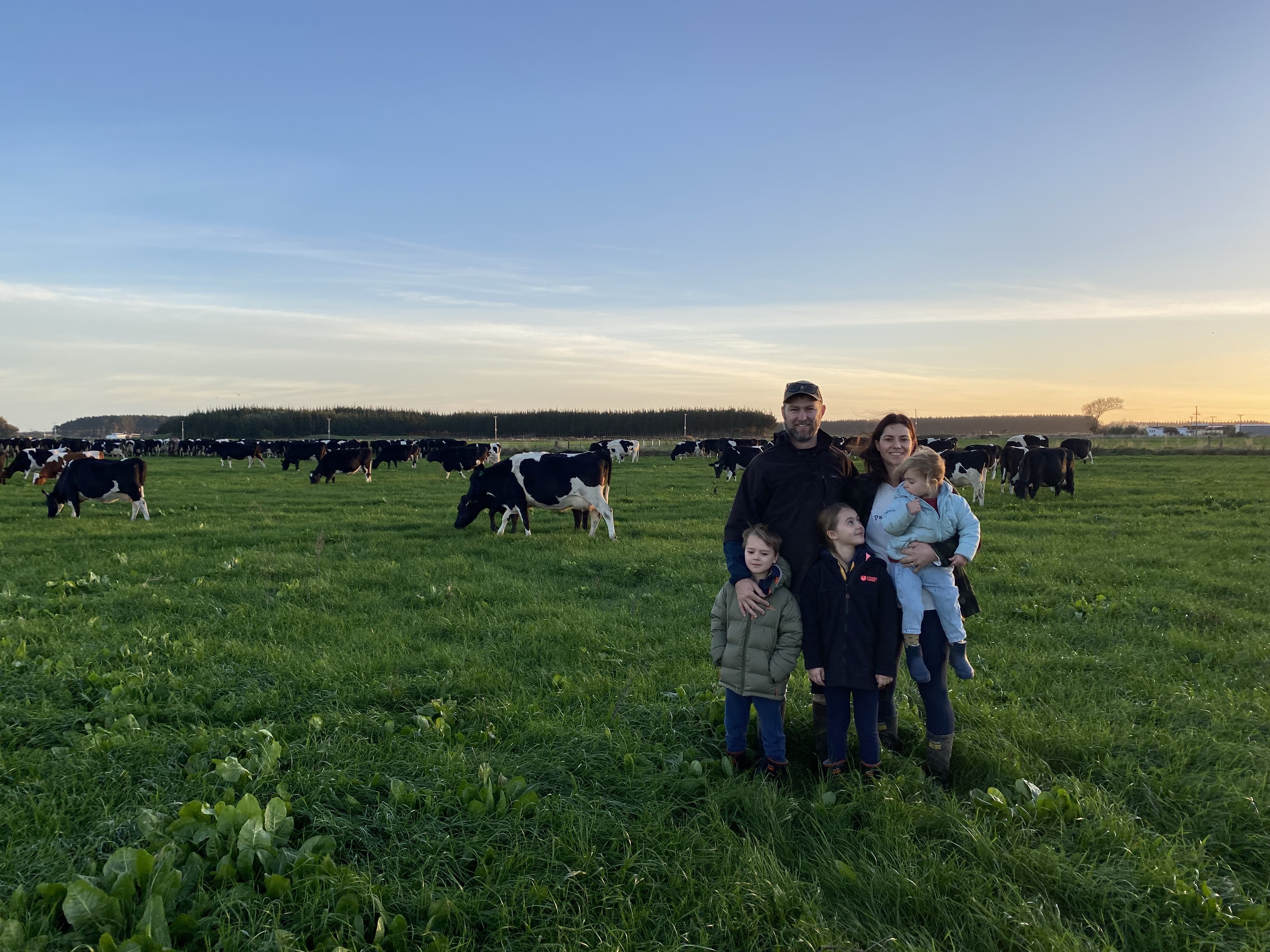Steve and Vera have been with CRV for seven years and were sharemilkers before stepping into farm ownership where they currently milk 500 cows across 210ha with a 180ha runoff.
Their operation is system four with a focus on nutrition and ensuring a fully fed herd.
“I'm quite visually orientated. We place a heavy focus on stature. We are aiming to breed a cow with a mature weight of less than 500kg but still has an annual production of 550kgms or at least 110% of her liveweight. Over and above that we also focus on fertility and things like cell counts,” says Steve.
The Shailers are coming into their fourth season using CRV’s sexed semen and their first crop of heifers from sexed straws have entered the milking herd.
We started using sexed semen when we transitioned to our own farm, and it's been instrumental in guaranteeing us replacements to optimise our breeding strategy,” says Steve.
By allocating 100 straws to sexed semen, the Shailers ensure around a 26 percent replacement rate.
“Using sexed semen helps us guarantee the number of replacements we’re getting and helps us accelerate our breeding goals. It allows us to do a small amount of production-based culling which in the past has been a rarity and often we have surplus incalf cows to sell which can help cashflow,” says Steve.
He says since using sexed semen they have started to see the shift in their herd, most notably improvements in stature.
“When we compare our herd to my father's herd next door, our cows are significantly smaller but producing the same amount,” says Steve. “The hope is that the reduction in liveweight may help to improve our farm’s footprint.”
The Shailers make all their own grass silage and the cows are fed four kilos of blended feed from the day they calve until they dry off. While they haven’t specifically seen a shift in their feed bill, as it changes depending on the season, Steve says in years to come and further genetic improvements are made he would expect his cows to need less feed to produce the same amount.
Using sexed semen has also allowed them to condense their artificial insemination period to four and a half weeks.
“We've got no technology on farm, so reducing that artificial breeding period from six weeks to four and a half has taken the pressure off myself and our farm staff. Anything not in calf following AB goes to bulls in the paddock,” says Steve.
He believes getting the bulls out earlier has also helped lower their empty rate, which sits at about 10 percent.
Steve says they have also seen very little difference in their empty rate using sexed semen.
“In terms of conception rates, we've found minimal difference between conventional and sexed semen. We do have strict protocols to ensure we pick the most eligible cows for breeding and only use sexed semen on cows in their second or third heat that are displaying strong physical signs.”
“Using CRV's sexed semen has been a smart investment for us. It aligns with our breeding goals and ensures a more sustainable and efficient approach to our herd management,” says Steve.

